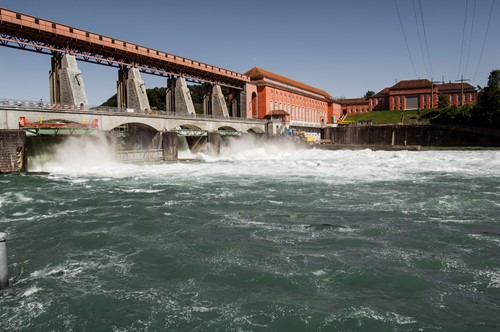News
Axpo launches H2 initiative in Switzerland

Axpo aims to develop an H2 production facility at the Eglisau-Glattfelden hydropower plant in Switzerland, the first of several that the company will commission in the coming years.
Scheduled to go onstream in autumn 2022, the 2.5-MW hydrogen production facility will produce about 350 t of green hydrogen annually, powered by the Rhine River. This will save the road transport sector more than 1.5 MM liters of diesel fuel a year.
If demand for hydrogen grows as expected, plant capacity can be doubled to 5 MW. Direct connection of the production facility to the power plant will ensure climate neutral hydrogen production. Preparations for the official approval process will commence in a matter of days.
Axpo began planning a hydrogen production facility at the same power plant in 2015. However, the project was not pursued further because hydrogen sales volumes remained below expectations. Guy Bühler, Head of Hydrogen at Axpo, explained: "Since then, the fight against climate change has become significantly more important, while hydrogen has proven to be a suitable energy source for decarbonization in the mobility and industry sectors."
Hydrogen filling station network under development
As the mobility sector’s hydrogen eco-system continues to develop in Switzerland, Axpo is teaming with Hydrospider AG to market the hydrogen produced at the Eglisau-Glattfelden power plant, delivering the hydrogen directly from the production facility to a network of filling stations. Today, there are already more than 50 trucks powered by hydrogen fuel cells on the road in Switzerland. According to Hydrospider, there will be more than 1,600 by the year 2026. The network of hydrogen filling stations will also grow significantly in the next two years, from a current six to approximately 50.
Green hydrogen is one of the most important climate friendly energy sources, especially in the industry and mobility area. It will also be key to achieving the decarbonization strategies of the European Union and other countries. Having recently established its own hydrogen business, Axpo intends to take a leading role in the transition to CO2-free energy supply. The company aims to develop projects with a combined capacity of 5 MW by 2022. More plants like the Eglisau-Glattfelden power plant are in the planning stages.

